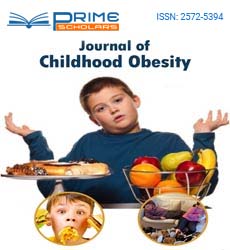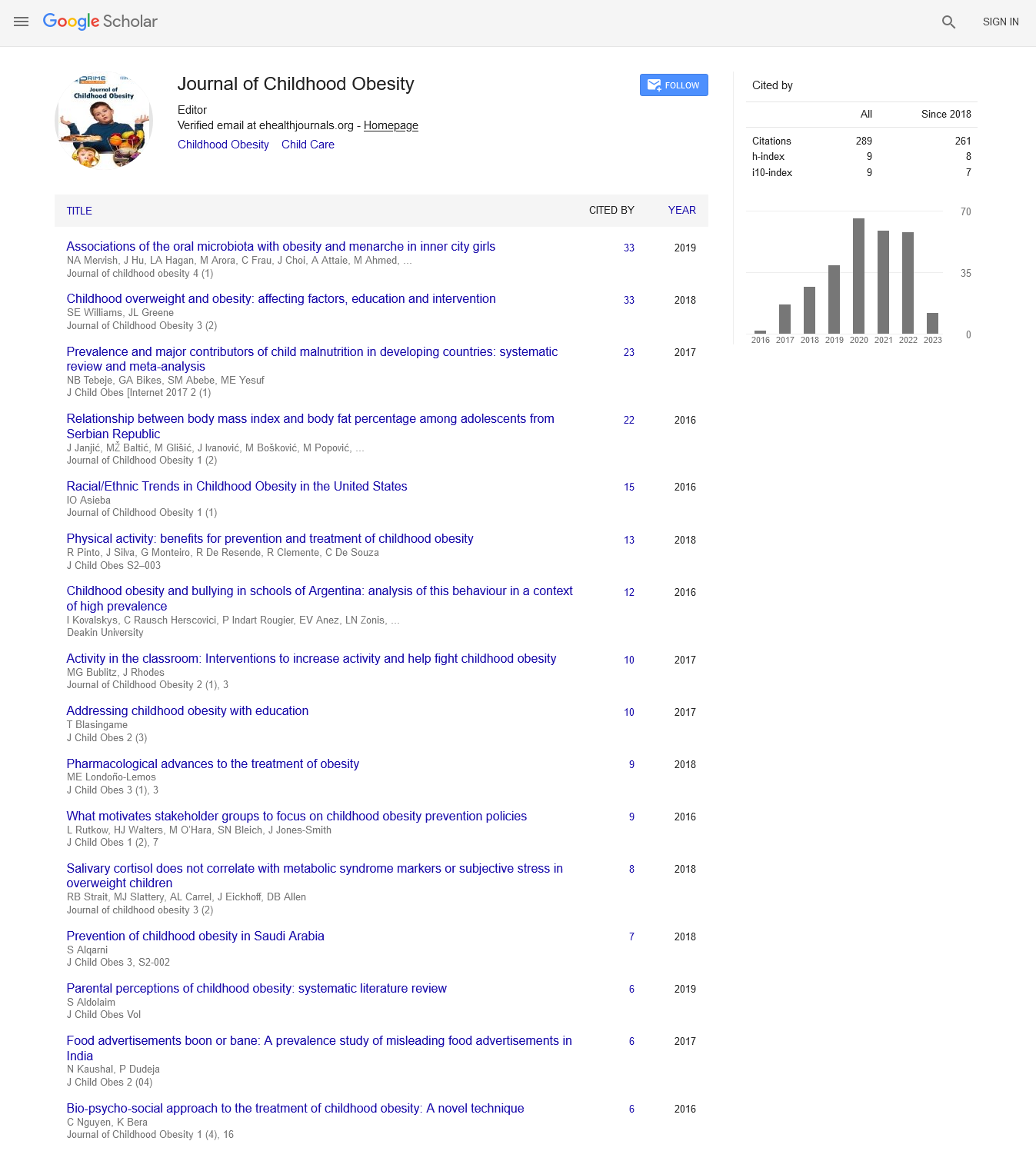Short Communication - (2021) Volume 0, Issue 0
Socio-environmental and Behavior Change in Pediatric Obesity
Fulton Wilfled*
Oregon Research Institute, Center for Family and Adolescent Research, Albuquerque, USA
*Correspondence:
Fulton Wilfled, Oregon Research Institute, Center for Family and Adolescent Research,
USA,
Email:
Received: 01-Dec-2021
Published:
22-Dec-2021
Introduction
Presently, over 30 of US youth are fat and 1 in 6 have metabolic
pattern, making youth rotundity one of the major global health
challenges of the 21st century. Many continuing treatment
strategies have been linked in youth populations, and the
maturity of standard weight loss programs fail to adequately
address the impact of cerebral factors on eating geste and the
salutary donation of maternal involvement in youth geste change
[1].
A critical need exists to expand treatment development sweats
beyond traditional education and cognitive-behavioral programs
and explore indispensable treatment models for youth rotundity.
Contemplation- grounded aware eating programs represent
a unique and new scientific approach to the current youth
rotundity epidemic given that they address crucial cerebral
variables affecting weight [1].
The recent expansion of awareness programs to include family
connections shows the immense eventuality for broadening
the customarily individual focus of this intervention to include
contextual factors allowed to impact youth health issues [1].
This composition provides an overview of how both aware
eating and family systems proposition fits within a abstract
frame in order to guide development of a comprehensive familygrounded
aware eating program for fat youth.
The practice of pediatrics is unique among medical specialties
in numerous ways, among which is the nearly certain presence
of a parent when health care services are handed for the case.
Anyhow of whether parents or other family members are
physically present, their influence is pervasive. Families are the
most central and continuing influence in children's lives. Parents
are also central in pediatric care. The health and well- being
of children are inextricably linked to their parents' physical,
emotional and social health, social circumstances, and childparenting
practices. The rising prevalence of obese problems
among children attests to some families' incapability to manage
with the adding stresses they're passing and their need for
backing [2].
When a family's torture finds its voice in a child's symptoms,
pediatricians are frequently parents' first source for help. There's
enormous diversity among families- diversity in the composition of families, in their ethnical and ethnical heritage, in their
religious and spiritual exposure, in how they communicate, in
the time they spend together, in their commitment to individual
family members, in their connections to their community, in
their gests, and in their capability to acclimatize to stress. Within
families, individualities are different from one another as well.
Pediatricians are especially sensitive to differences among
children-in their grains and personalities, in their ingrain and
learned capacities, and in how they view themselves and respond
to the world around them [2].
It's remarkable and a testament to the trouble of parents and
to the adaptability of children that most families serve well and
most children succeed in life. Family life in the United States
has been subordinated to expansive scrutiny and frequent
commentary, yet indeed when those conditioning have been
informed by exploration, they tend to be told by particular
experience within families and by individual and artistic beliefs
about how society and family life ought to be. The process of
formulating recommendations for pediatric practice, public
policy, professional education, and exploration requires reaching
agreement on some core values and principles about family
life and family performing as they affect children, knowing
that some philosophic dissensions will remain undetermined.
The growing multilateral character of the country will probably
heighten mindfulness of our diversity. Numerous characteristics
of families have changed during the once 3 to 5 decades. Families
without children youngish than 18 times have increased mainly,
and they're now the maturity [2].
REFERENCES
- Schor EL, American Academy of Pediatrics Task Force on the Family (2003) Family pediatrics: Report of the Task Force on the Family. Pediatrics 2003; 111:1541-71.
- Dalen J, Brody JL, Staples JK, Sedillo D (2015) A conceptual framework for the expansion of behavioral interventions for youth obesity: A family-based mindful eating approach. Child Obes 11:577-84.
Citation: Wilfled F (2021) Socioenvironmental and Behavior Change in Pediatric Obesity. J Child Obes. 2021, S6:1
Copyright: © 2021 Wilfled F. This is an open-access article distributed under the terms of the Creative Commons Attribution License, which permits unrestricted use, distribution, and reproduction in any medium, provided the original author and source are credited.
Competing interests: The authors have declared that no competing interests exist.

